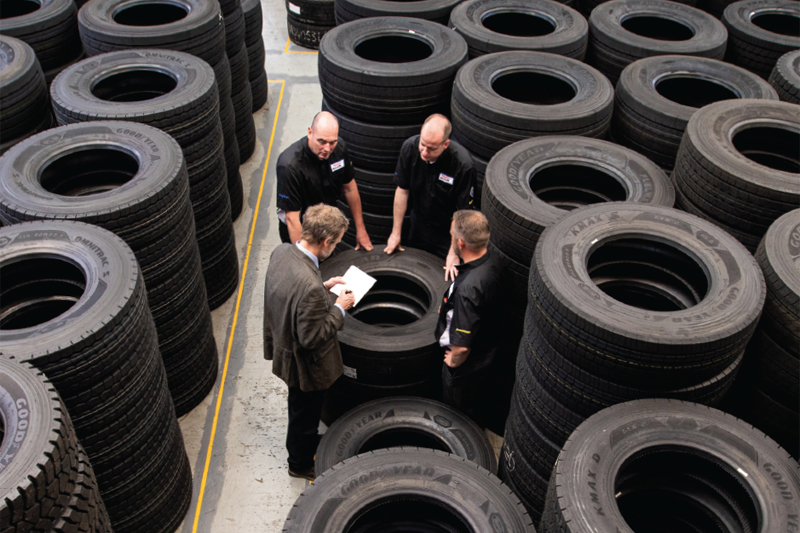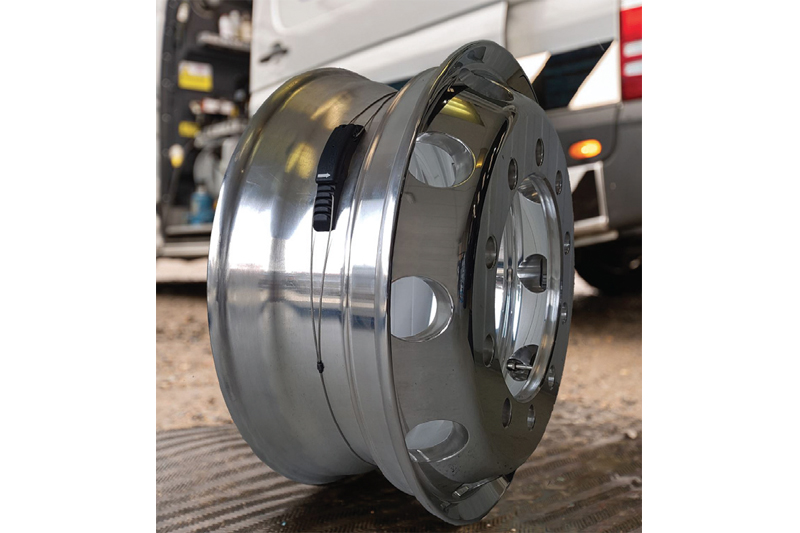
Goodyear outlines the areas which fleet managers should focus on when considering their fleet’s overall tyre management programmes.
We know that hauliers often have to juggle many things in a short period of time. Optimising uptime, mileage, and fuel efficiency are simultaneously their main objectives and primary challenges. Every minute – and pound – counts. As the only point of contact between the vehicle and the road, tyres have a significant role to play. For instance, maintaining the correct pressure will have a noticeable impact on a tyre’s rolling resistance. This, in turn, impacts fuel consumption, meaning that trucks with under-inflated tyres will consume more fuel. Tyres with greater rolling resistance have also been found to wear through their tread more quickly, meaning that they are likely to need changing more regularly than those that are properly maintained.
So what should fleet managers focus on?
Carry out regular inspections
It’s vital that fleet managers keep a constant eye on their vehicles’ tyres, checking that they’re properly inflated, have plenty of tread, and that there are no cuts in the sidewall. However, this can take a lot of time, especially in the case of a larger fleet. One customer told Goodyear that inspecting the tyres on 50 of their vehicles ordinarily took around 20 hours of continuous work.

On top of the recommended walkaround inspection, which should be performed by the vehicle’s driver before operating, there are smart solutions available to get more precise and real-time data. Goodyear’s own Tyre Pressure Monitoring System (TPMS), DrivePoint system and Drive-Over Reader (DOR) can all be helpful in this regard, not only allowing fleets to keep a constant eye on their tyre pressures but also to save a huge amount of time. But by using the DOR, the customer who told Goodyear that they were struggling to find time for tyre maintenance was actually able to monitor all 50 of their vehicles’ pressures within an hour.
The maintenance doesn’t end there, though. Once those vehicles are on the road, the fleet manager can use a dedicated app to receive daily updates regarding the condition of the tyres, plan maintenance proactively while minimising the impact on daily operations and change the tyres at the right time – not too soon and not too late. As a result of solutions like these, it’s never been easier to make sure that a fleet’s tyres are running as efficiently and sustainably as possible.
The benefits of retreading
Beyond the impact that running poorly maintained tyres will have on fuel efficiency and treadwear, there are other pitfalls to consider. For one thing, there’s the question of uptime. Goodyear’s own research has found that fleets using TPMS can prevent up to 90% of tyre-related breakdowns.

Another consideration, though, is retreading. Upon receiving a worn tyre casing, Goodyear experts thoroughly inspect it and only prepare those that pass strict acceptance criteria for retreading. If a tyre isn’t properly cared for while it’s on the road, it’s possible that it might not be deemed suitable for retreading. As retreading is essential for commercial vehicle operators to get the maximum economic benefit from their tyres, whilst also reducing CO2 emissions per km, this adds yet another layer to the argument that proper tyre maintenance is good for efficiency.
When it comes to managing fleets, tyre maintenance is essential. Focusing on these areas can go a long way towards helping to save both money and time.








